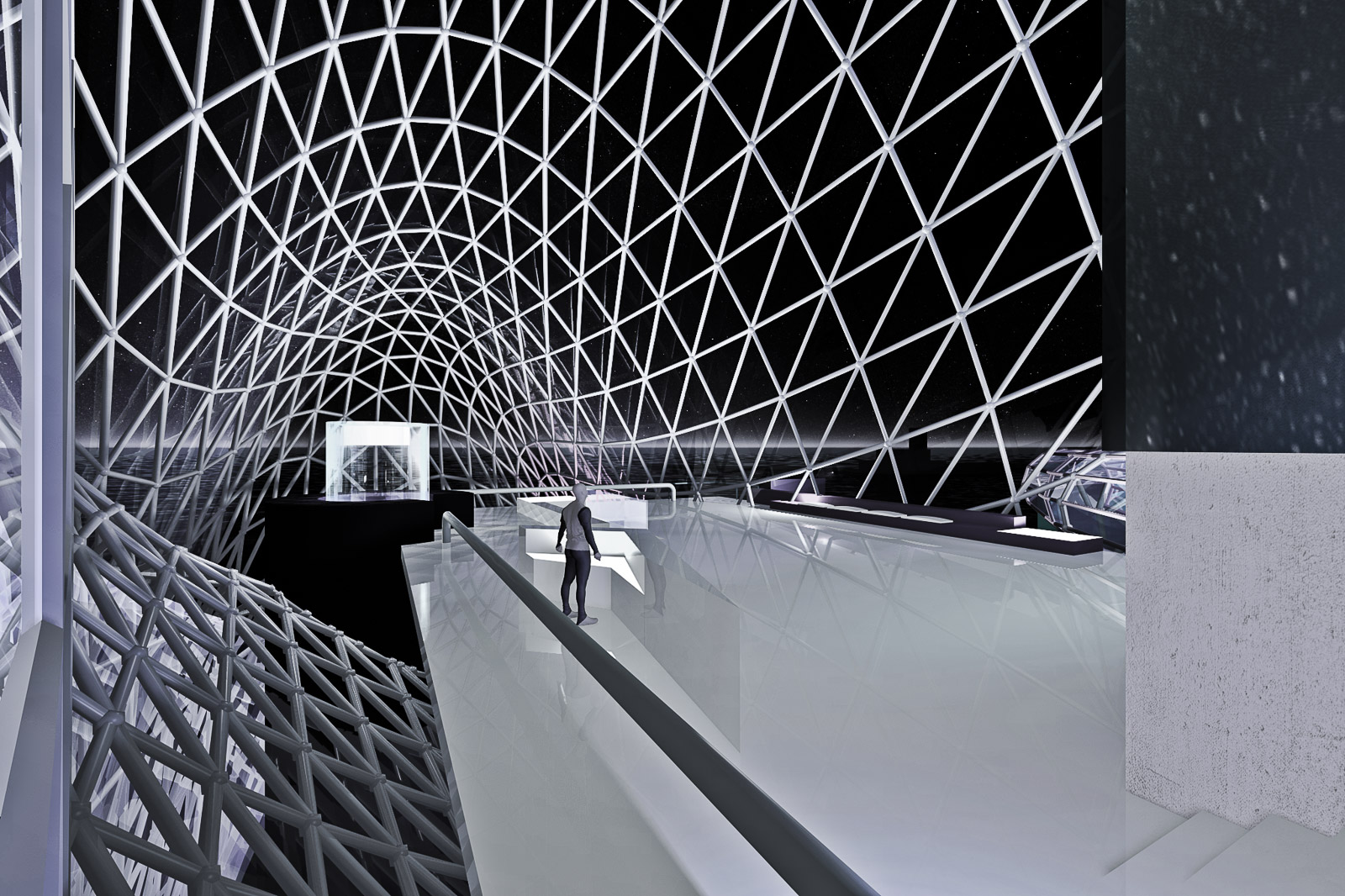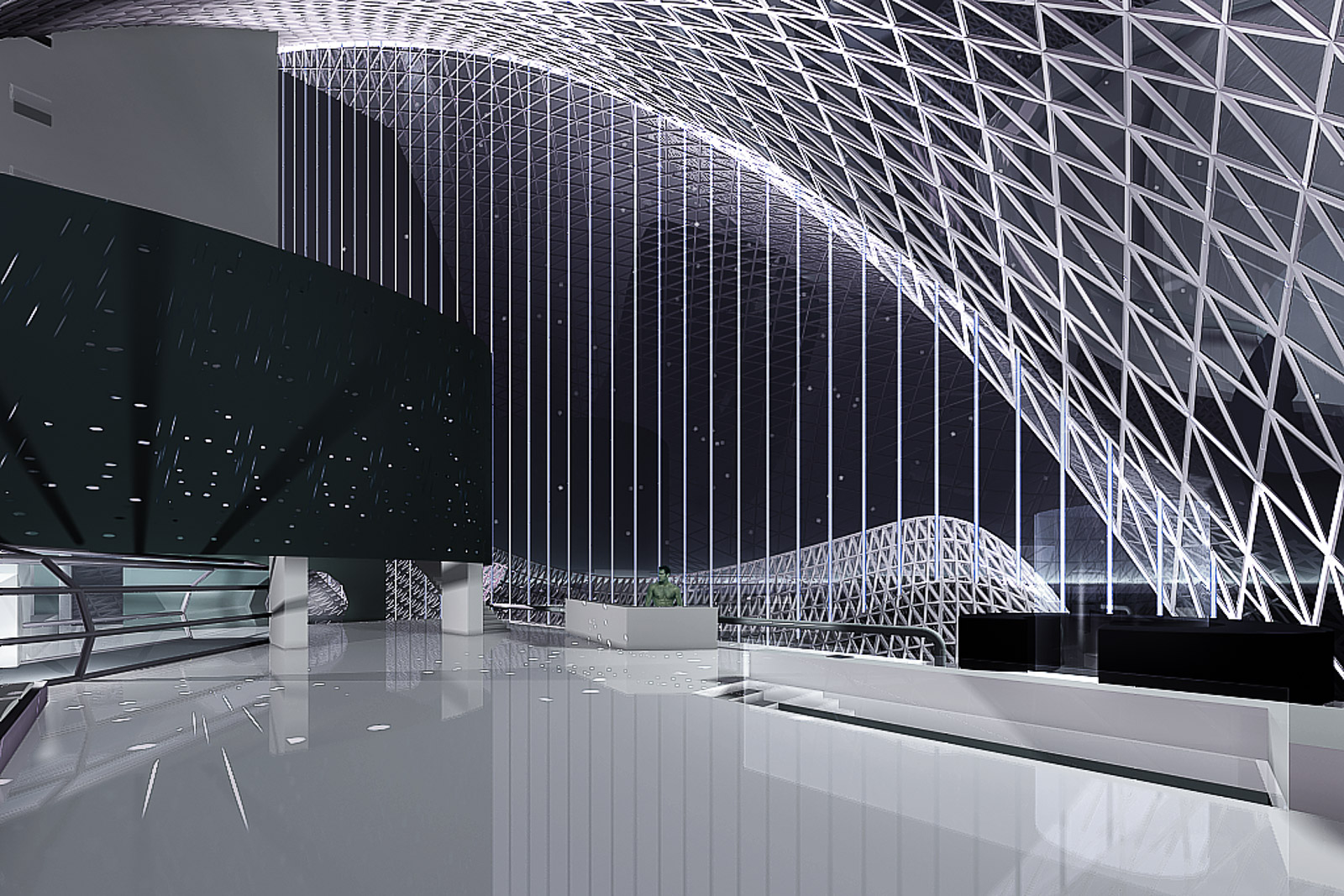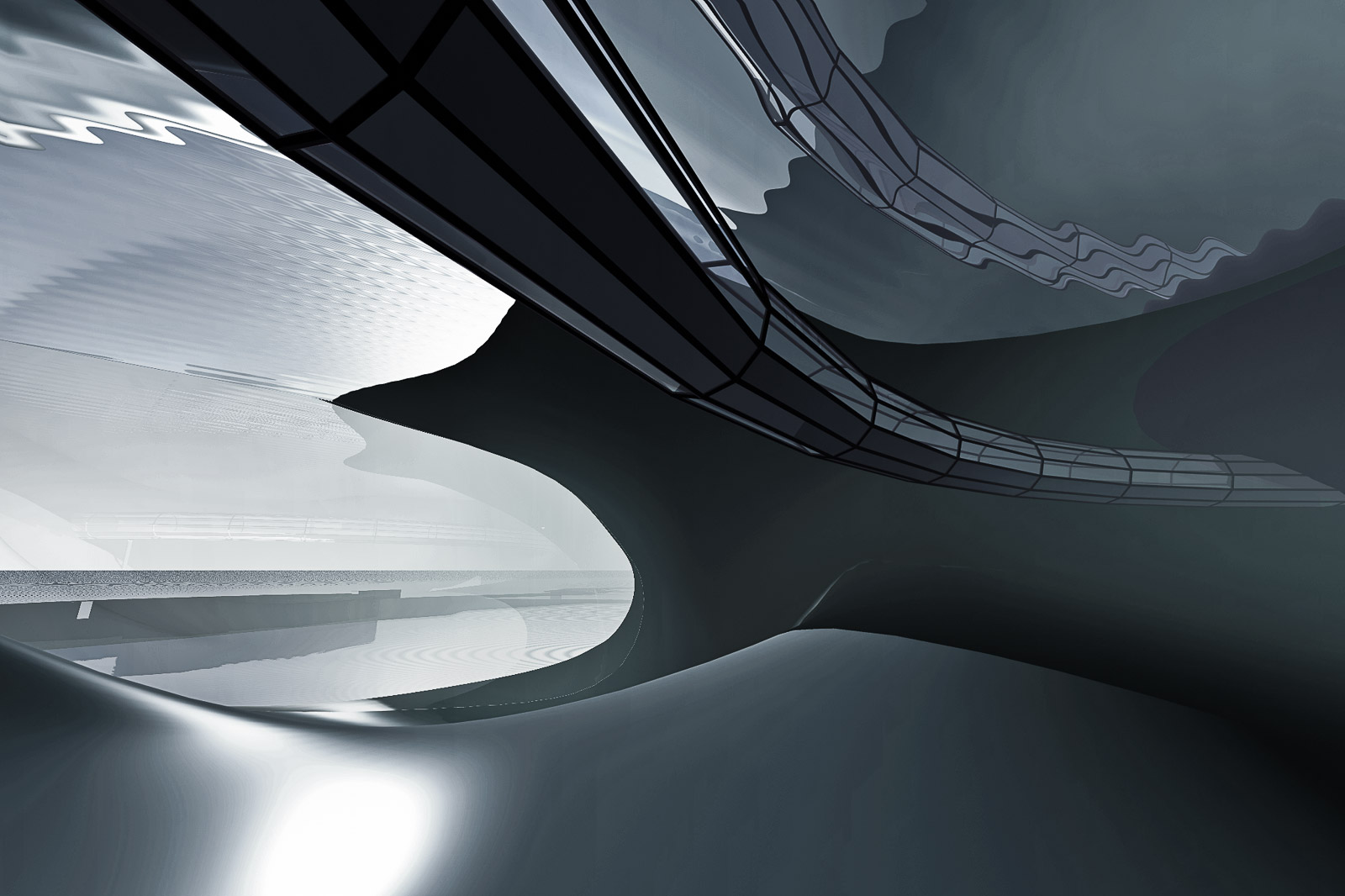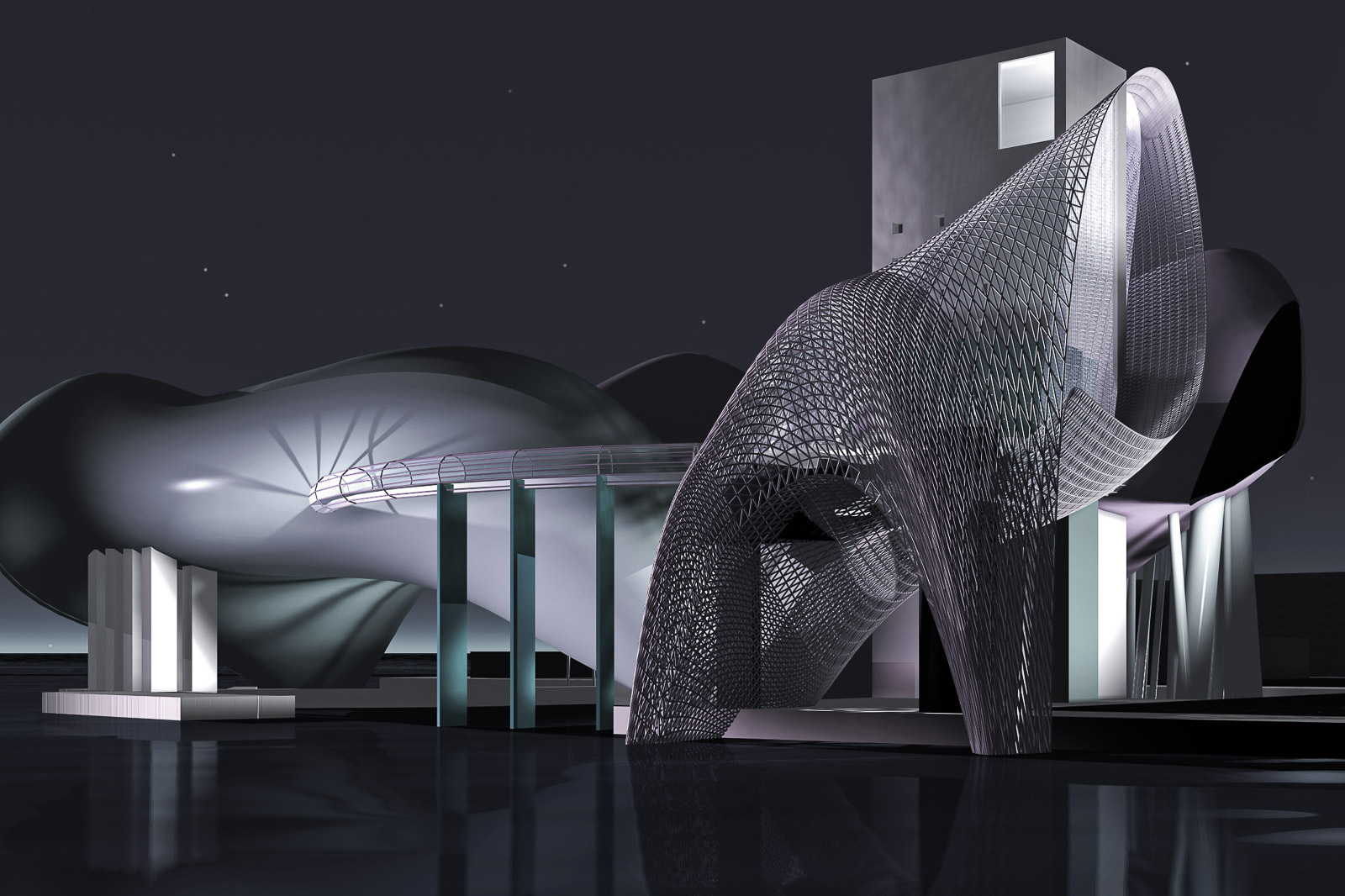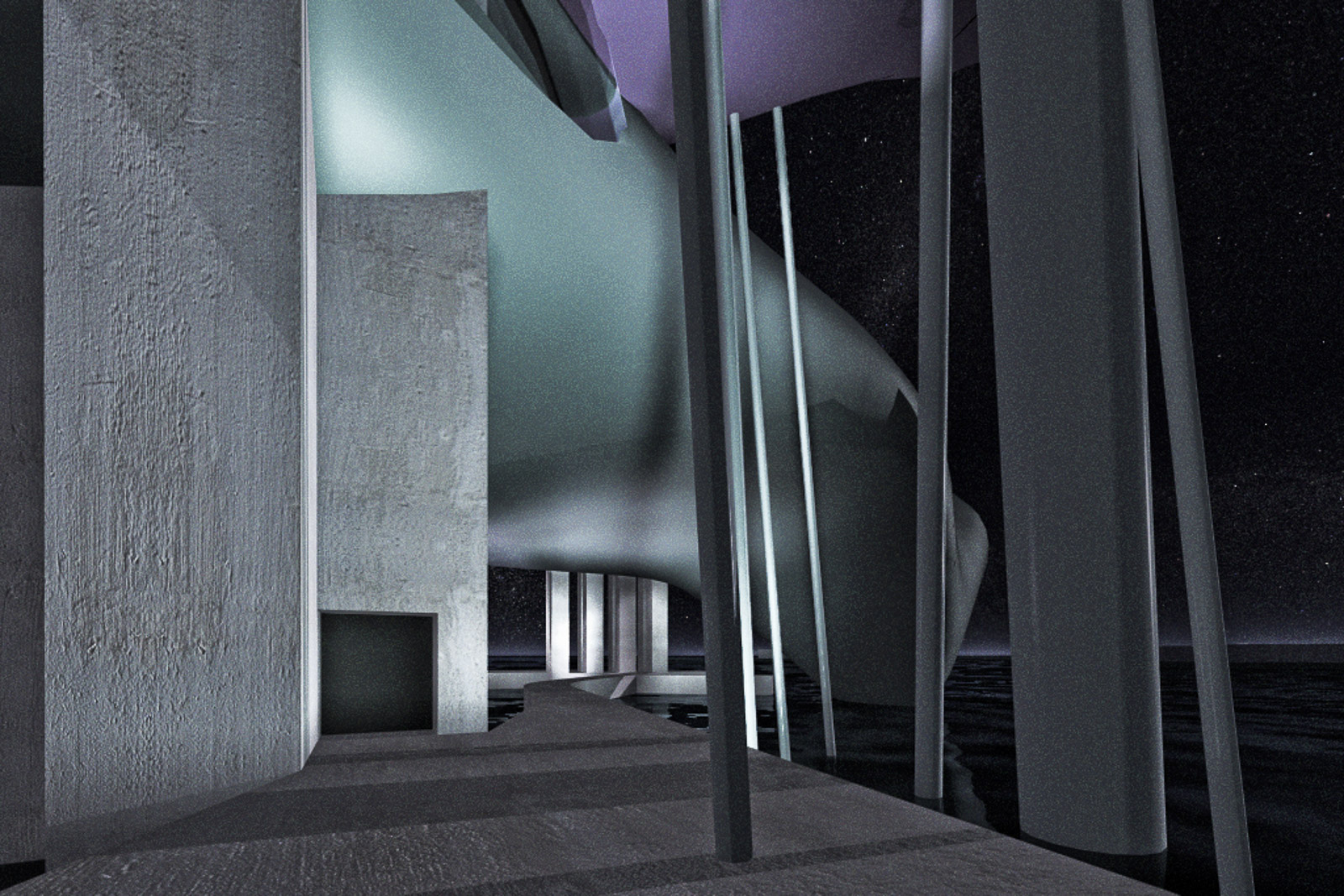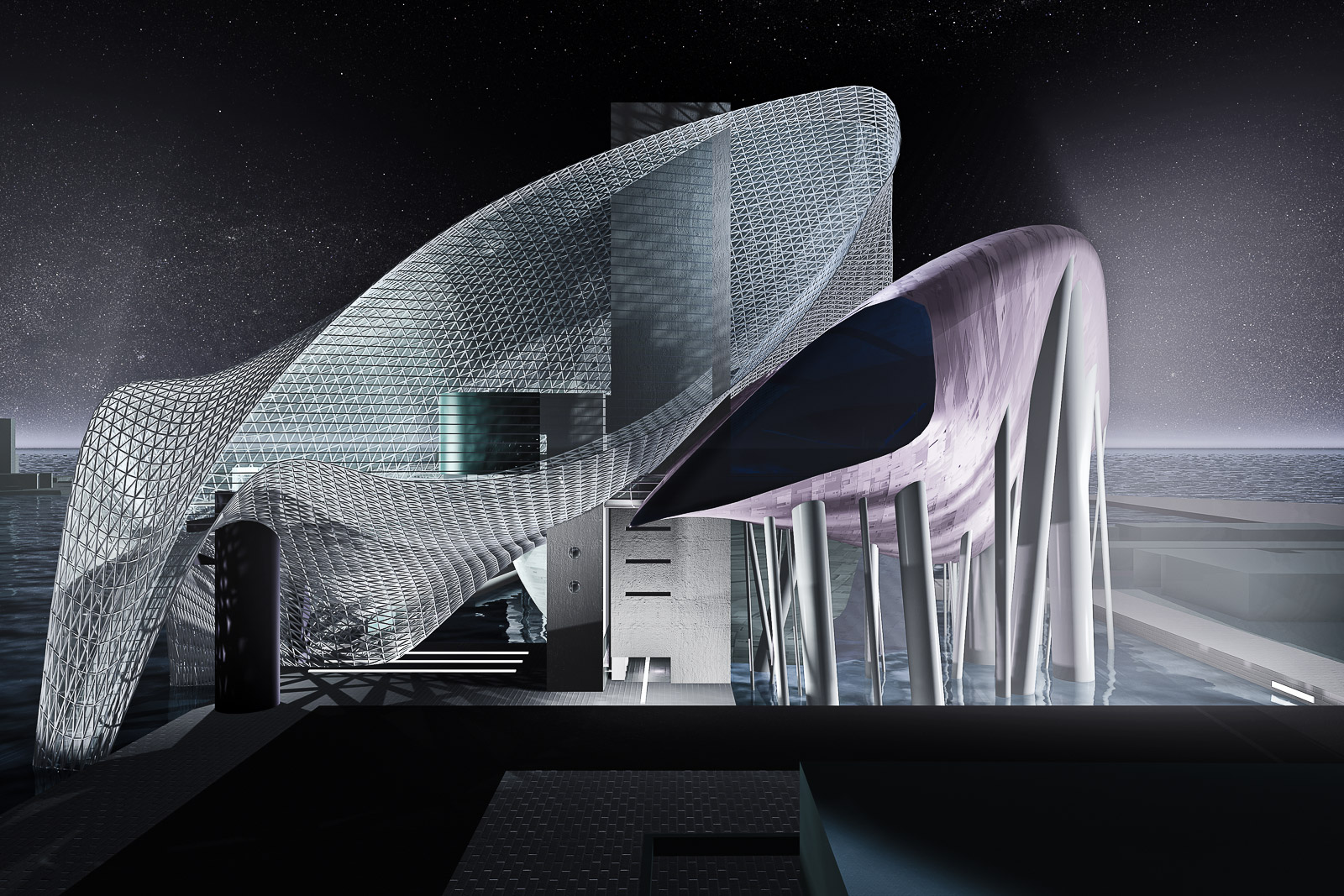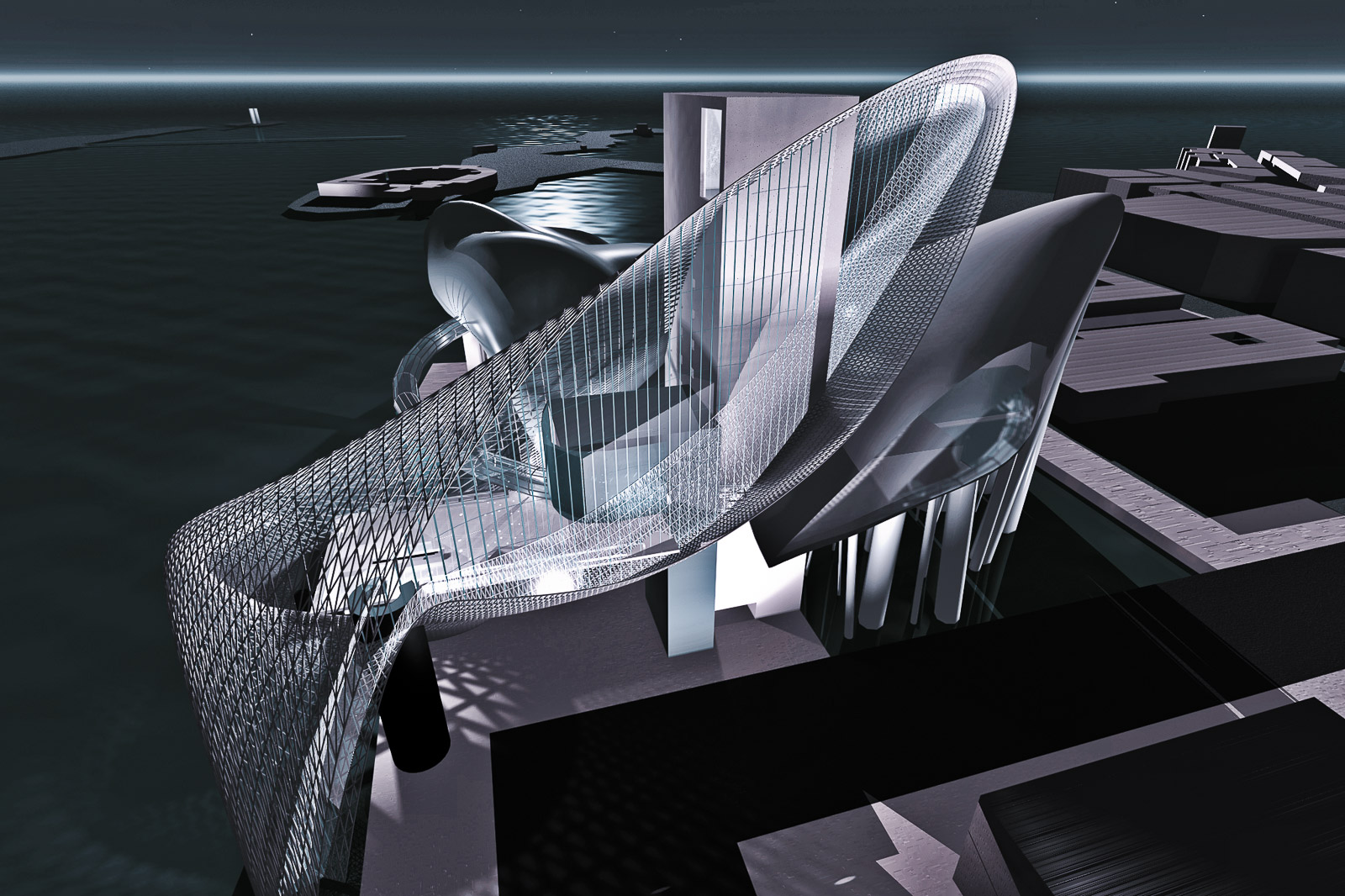
Project
Antonino Cardillo
An aquarium is fundamentally a house for fish. If the house cares for its marine inhabitants it will probably also be a good piece of architecture. Such a presupposition is realised in the idea of building tanks, analogous in dimension and shape to the natural habitat, thus becoming pretexts for the elaboration of fluid cavities, modelled by means of curves and nurbs surfaces, a mathematical representation that accurately defines solids and surfaces with free or organic shape. Suspended on the water, denouncing their form to external space, they are moulded, cave-like, for the benefit of the little fishermen’s boats. Aiming to be as discreet and respectful as possible to aquatic ecosystems, the visitor experiences the aquarium through a tubular pressurised gallery developing along a circumference of 800 metres. It creates a continuous walk which crosses the architectural complex from the light and ample Foyer to the fleeting and mysterious aquatic cavities. This system of visitor experience reverses the conventional hierarchy of single tanks and paths, the result of a vision of biological life rigidly subdivided by classes and sectors. Therefore the fishes’ aquaria consist of two thirds of the building and man’s experience is reduced to a single circular path, relatively small in proportion to the other parts. With the intention of sparking a synergy between experience within marine ecosystems and the outside world where the aquarium is sited, moreover, in the pauses between the principal tanks, the glass walls of the gallery suspended over the Mediterranean at a height of about 20 metres, give ample and luminous views over the archipelago of islets that fade away into the sunset until they condense on the three crusts of the Egadi islands on the horizon. In the circular path beginning and end coincide on the floor of the Foyer. Rising 20 metres over the sea, rational and irrational entities are revealed in a closed dialectic. The concept which subtends the composition can be seen as deriving from the American Pavilion by Buckminster Fuller built for the 1967 Montréal Expo: a collection of open buildings enclosed in a geodesic grid structure. It is diverse in its method of shaping and recounting space and therefore in language. Here Fuller’s platonic structure is substituted for an indefinable veil extending between the White Tower of the Department of Marine Biology and the sea. Condensed formally and structurally by a system of metal shafts looking like a rigid shell, it envelops the space in an extension of concaves and convexes. Inside there is an almost neoplastic dance of elementary objects. Their presence in the space does not imply a hierarchy, but an invisible network of resonances which make up the architecture. Some of them include the functions of the Foyer: reception, lounge, galleries, shuttle lifts and stairs. Others, like in a vertical village, are true buildings within the building which, in strict succession, present themselves vertiginously on the platform of the Foyer. A recurving surface of green tunnelling envelops the interior of the Cafeteria and Bookshop, extended on two levels and accessible by a small staircase from the Foyer. Lastly, the spaces assigned to scientific study inside the White Tower integrate both entertainment and research.
This text was first published in Tasarim (pdf), no. 169, Istanbul, March 2007, pp. 126‑128.
